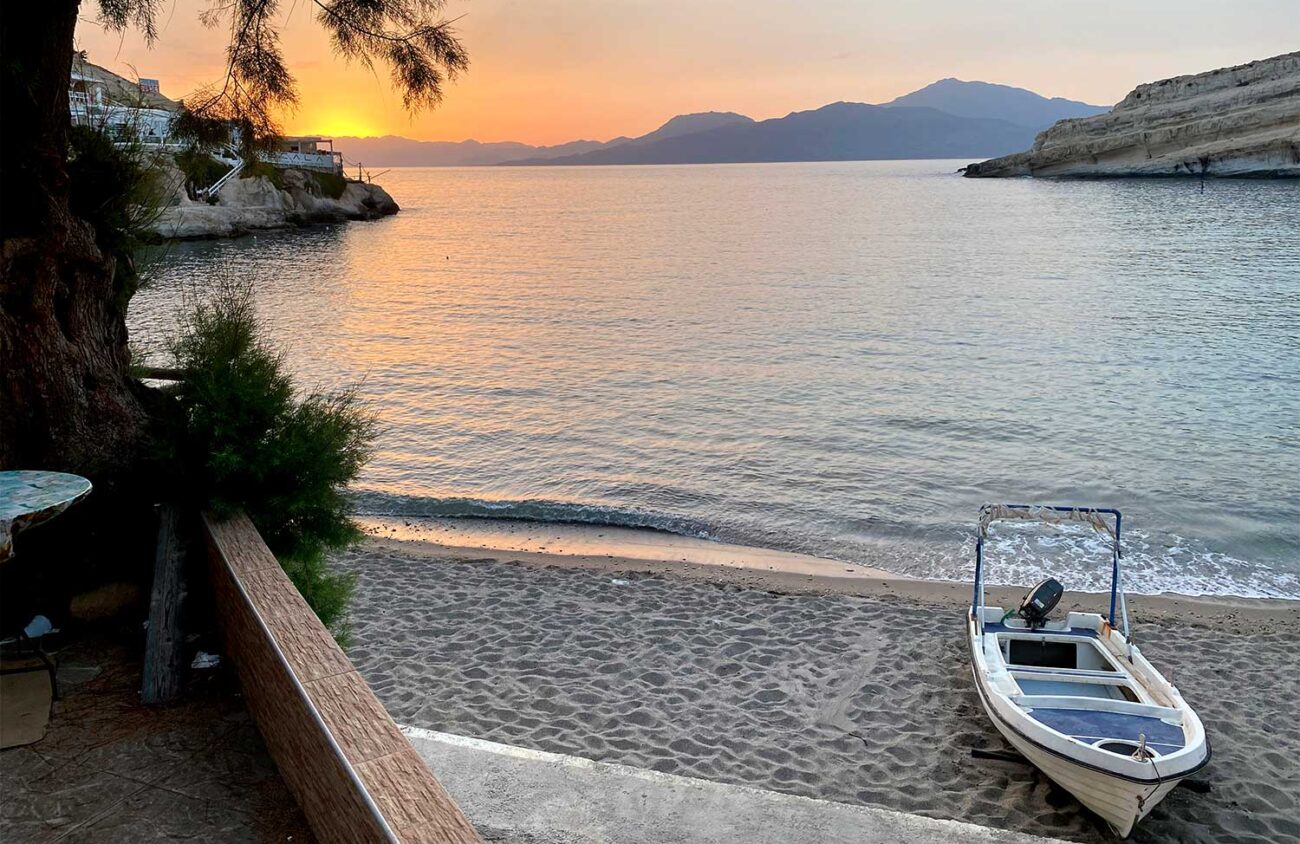Matala, a quiet beach village on the Greek island of Crete, became an international hangout for the flower children of the 1960s. A surprising number of kids from Oregon joined in the happening.
George Harrison, the hippest Beatle, camped in a cave here. Singer/songwriter Joni Mitchell told of her stay in her hit song, “Carey”:
The wind is in from Africa
Last night I couldn’t sleep
Oh, you know it sure is hard to leave here, Carey
But it’s really not my home
My wife Janell and I were never exactly hippies, but we did backpack through Crete years ago, and liked the place so much that we recently returned.
History is as layered here as the cave-riddled strata that tilts into Matala’s emerald green bay. Ruins on the south shore of Crete predate the Egyptian pyramids by half a millennium. The city of Phaestos, now a maze of stone ruins on a hilltop near town, was a bustling provincial capital for the Minoan civilization in 2000 BC, long before the great temples of Athens’ acropolis arose.
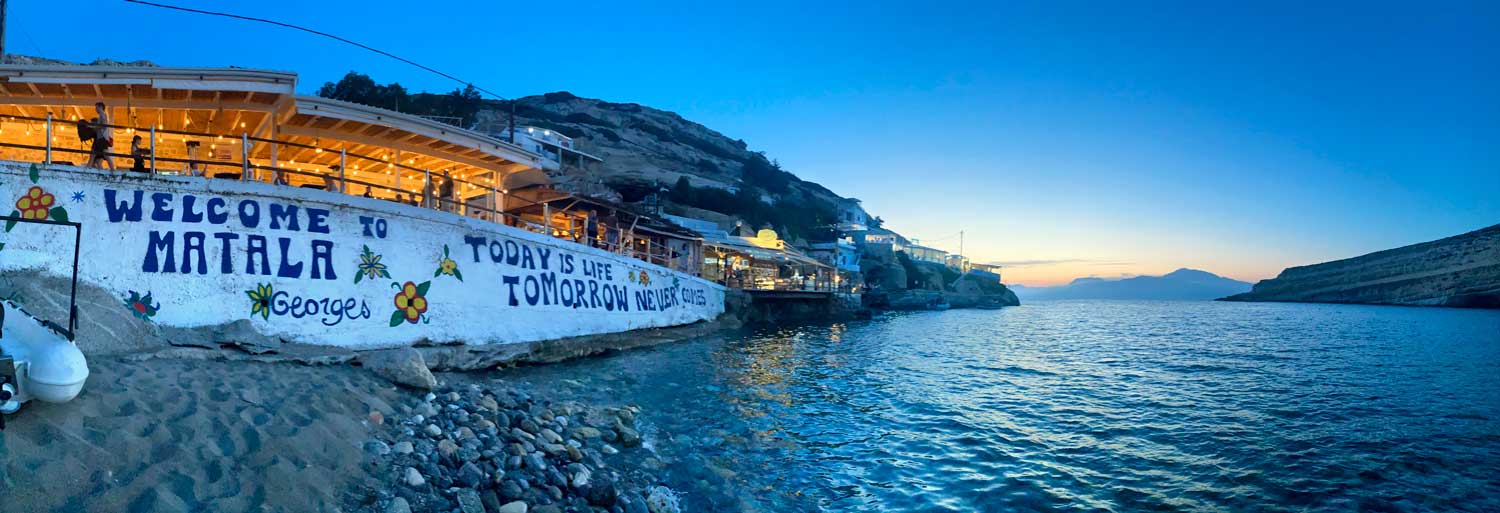
With the Roman conquest of Crete in 69 BC, the capital moved a few miles east to Gortina, where a stone amphitheater remains. Germans occupied the island in World War II, but faced resistance from armed Cretan partisans.
In contrast, locals greeted the invasion of hippies in the 1960s with bemusement and their traditional hospitality — at least at first.
Bright-eyed girls in bikinis and long-haired boys with guitars tumbled off the dusty bus from Heraklion. They filled liter bottles with red wine at the tavernas and set up housekeeping in the ancient caves above the beach.
Locals disagree about who originally chiseled out these multi-room caverns. Some say they were used as tombs for early Christians. Others argue that they more closely resemble dwellings, perhaps for workers at the seaport for Phaestos.
Everyone agreed that the caves had been abandoned for ages. Why not let these strange foreign guests camp there?
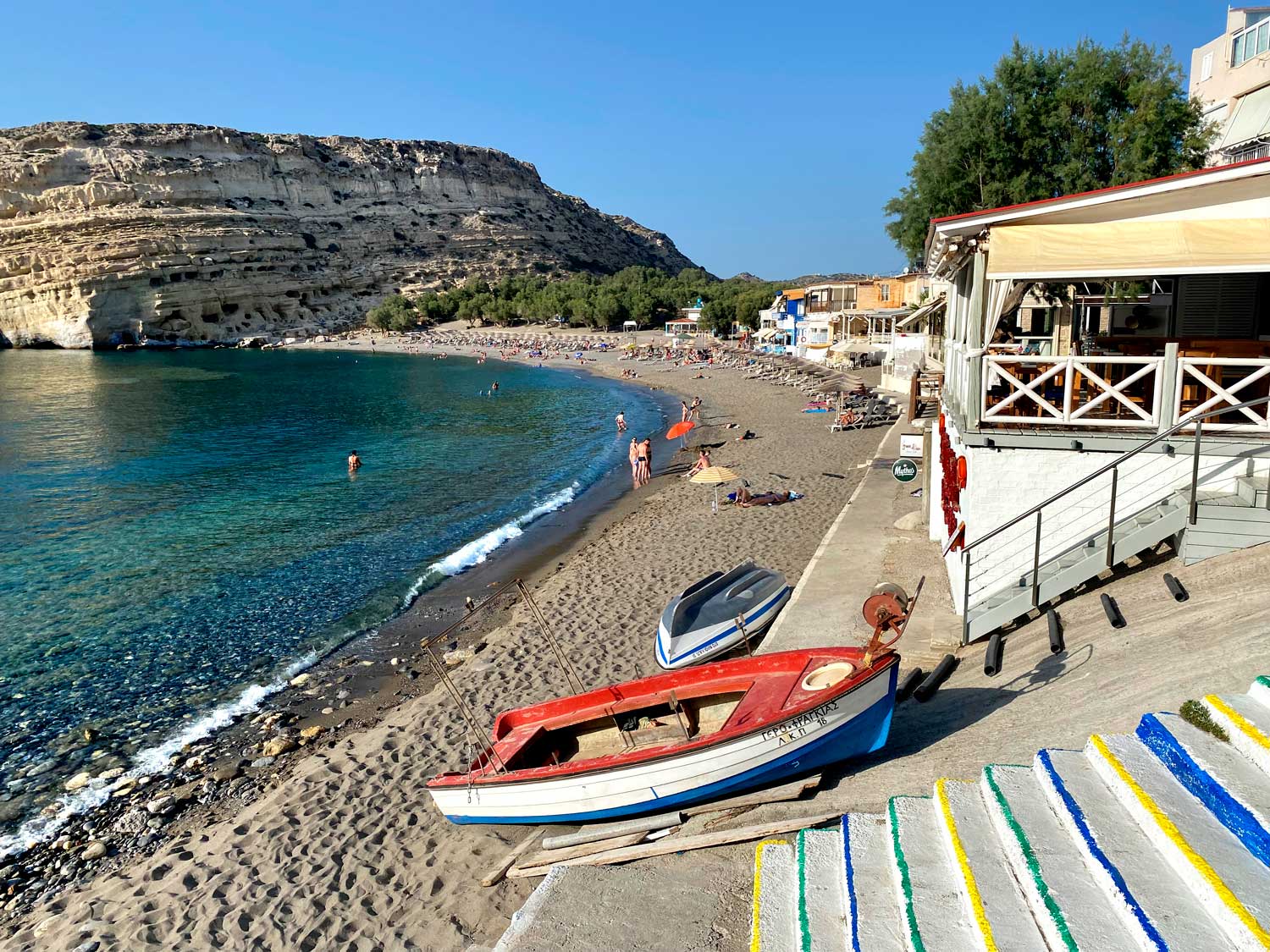
Barbara Haynes now lives with her husband in a cabin on Oregon’s Umpqua River, but in 1968 she was hitchhiking through Europe with two other 20-year-old women. To save money on the ferry to Crete they slept on the deck.
As for Matala itself, Haynes says, “My memories are pretty sketchy. I know I visited the caves, but I think I slept on the beach. I do have a very clear memory of a Greek extended family at the beach one day.”
Haynes recalls being surprised that the family buried a tiny old woman, presumably a great-grandmother, in the hot sand, leaving just her face exposed. They provided her with shade and tended her lovingly. “At the time it was curious but now, as an old woman myself, I realize it was to soothe her aching body.”
Mitchell was less fond of the accommodations in Matala.
My fingernails are filthy
I got beach tar on my feet
And I miss my clean white linen
And my fancy French cologne
What kept Mitchell in Matala was a burly, limping Greek cook named Carey. As she later retold the story, she had been eating chocolate and oranges on the beach. She put her garbage in a bag, walked into the nearest cafe, and told the man behind the counter to dispose of it.
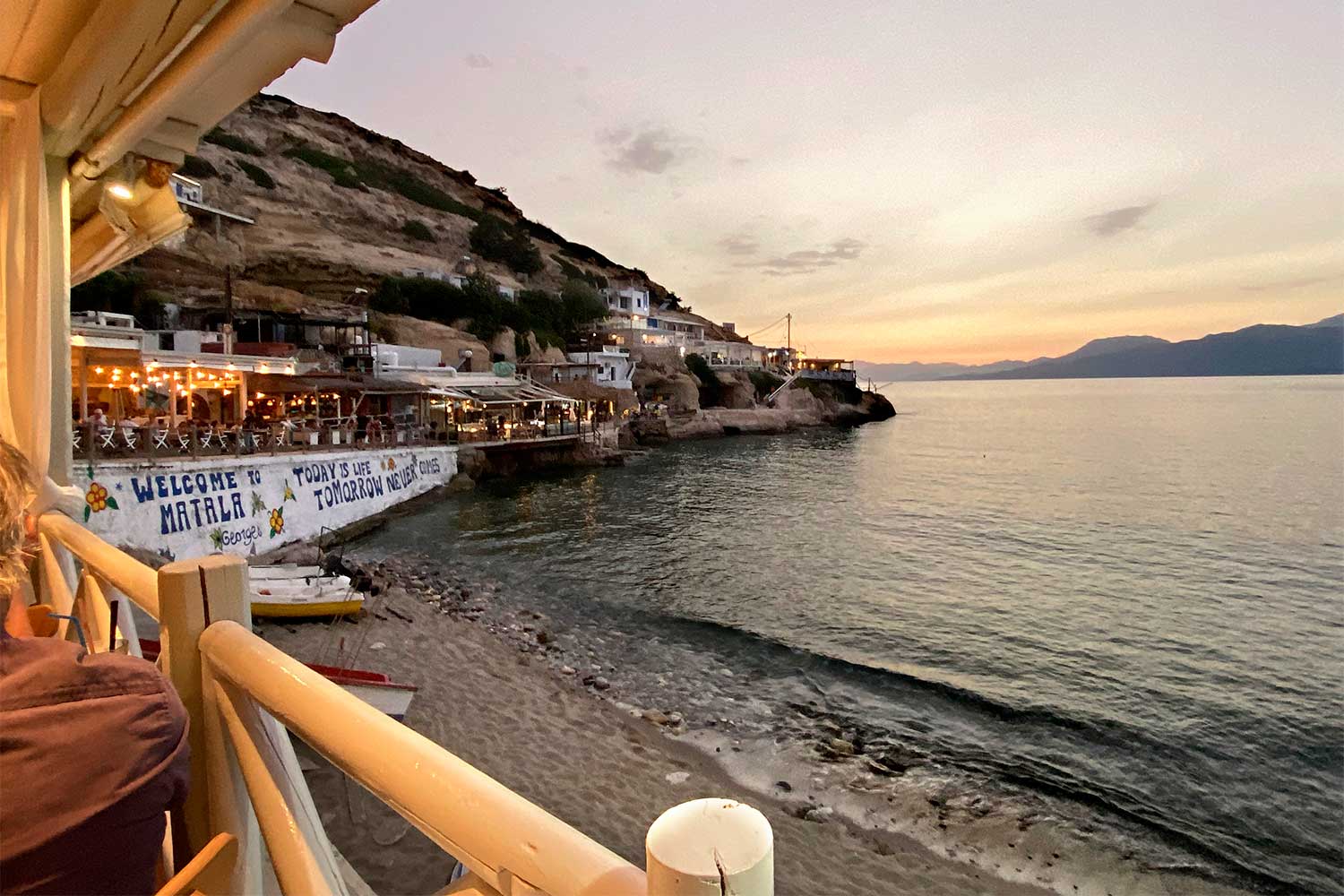
Without a word Carey emptied the bag across the floor of his restaurant.
“I liked him at once,” Mitchell later recalled.
Today olive groves still dot the red hillsides of Matala with green. Boats in the bay still cast shadows on the seafloor through water clear as glass.
Hippies no longer live in the caves. When locals finally tired of the garbage and sewage from what had essentially become a homeless encampment, the Greek Army cleared out the foreign kids. You can now visit the caves between 10 am and 4 pm for a fee.
Still, Matala has not turned its back on its hippie heyday. A VW bug with flower decals is parked at the city’s entrance. Locals maintain a giant 1960s graffiti slogan on the sea wall, “Today Is Life, Tomorrow Never Comes.” Every June the town hosts a Beach Festival, when free paint is provided for people who want to decorate the main street’s pavement.
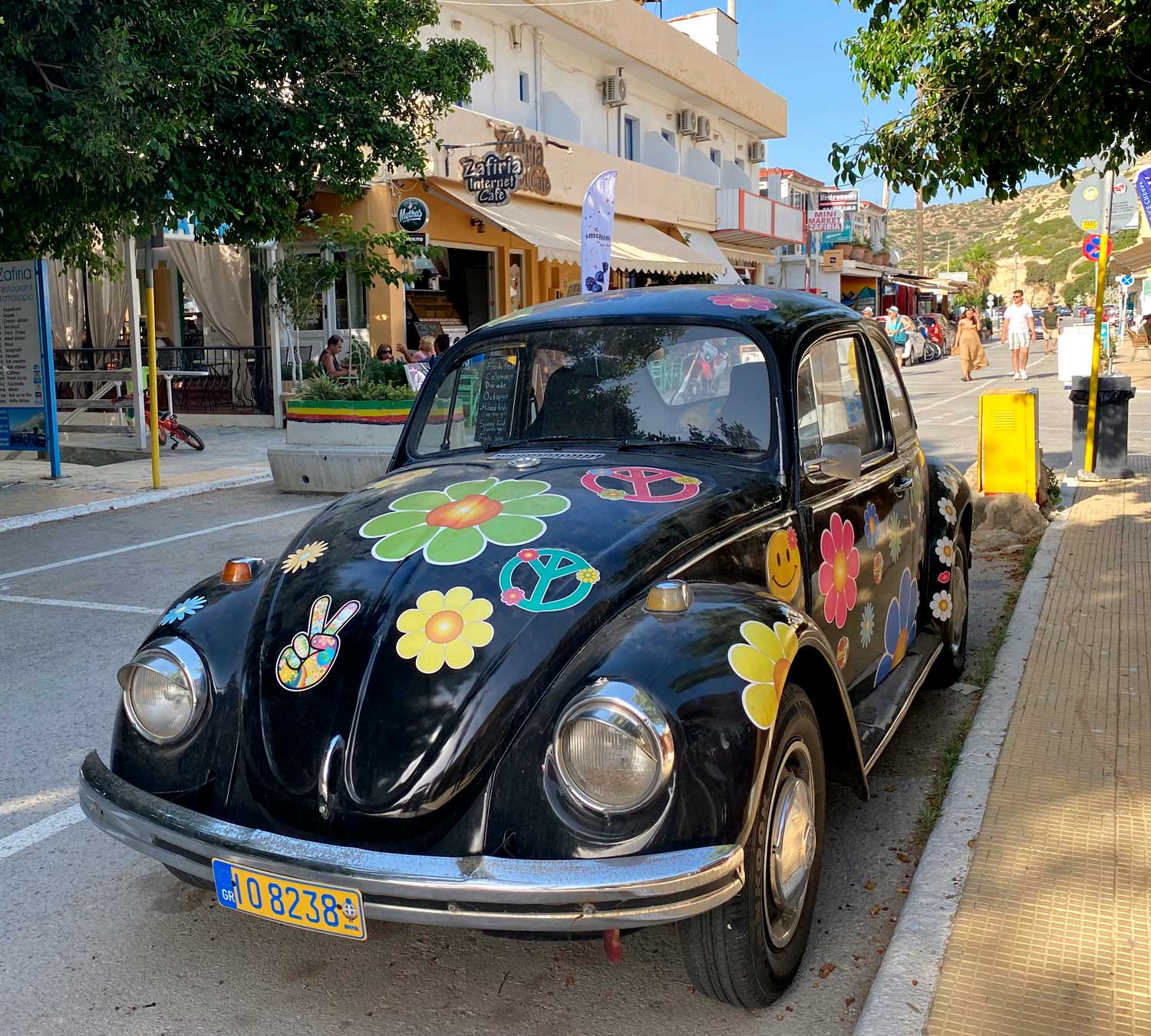
Matala remains a laid-back place, a cross between the Oregon Country Fair and the coastal kitsch of Depoe Bay. Even if you never did the hippie thing, the sunshine of Matala makes it easy to slip into a nostalgic groove of peace, love, and a world without war.
Mitchell, too, felt how hard it was to leave the idyll of southern Crete. She sang,
The night is a starry dome
And they’re playin’ that scratchy rock and roll
Beneath the Matala moon
